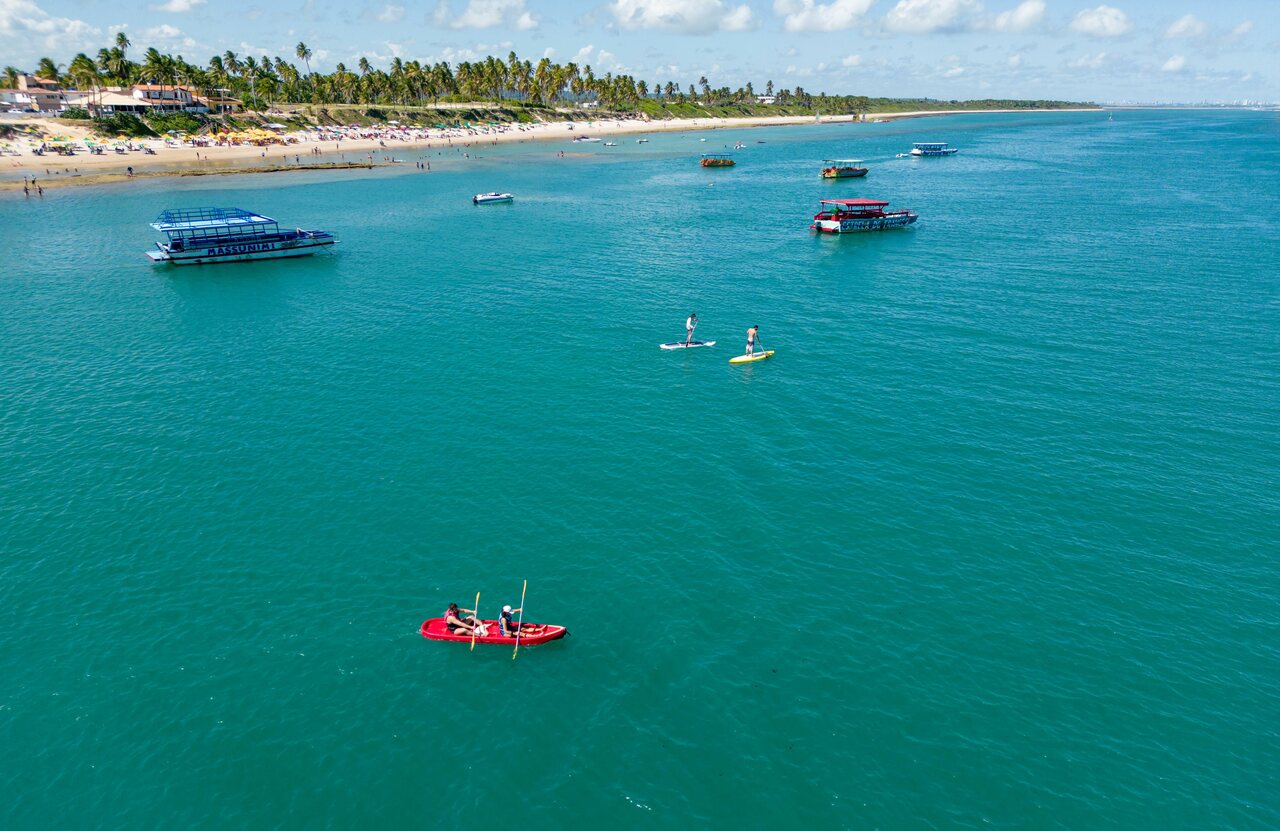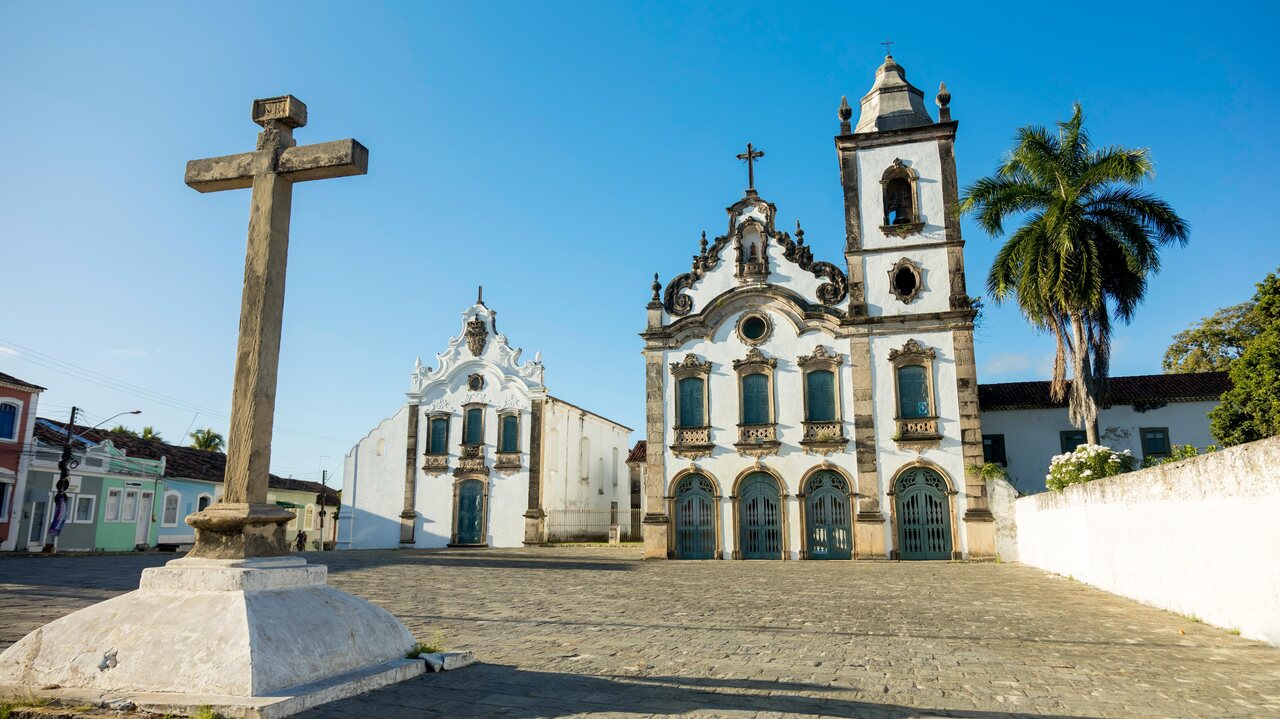Discover Praia do Francês / Marechal Deodoro
The final destination of Sertões 2025, Marechal Deodoro (AL) offers an interesting mix of natural beauty and cultural and historical richness. Just 30 kilometers from Maceió, it offers a wide range of hotels and restaurants and a variety of activities.
The city’s history is practically intertwined with that of Brazil. A few decades after the arrival of the Portuguese, the region was occupied as the Sesmaria de Santa Madalena do Sumaúma. It became the target of the greed of the French (who smuggled Pau-Brasil with the help of the Caeté indigenous people) and the Dutch. In 1828, it was given the status of the first capital of the Province of Alagoas (being named Vila de Alagoas).
Ten years later, a character who would become decisive in the country’s history was born there: Marshal Deodoro da Fonseca, who proclaimed the Republic and became the first president of Brazil. It is more than justified that it gave its name to the city, founded on November 9, 1939. The richness of its preserved architectural heritage led to Marechal Deodoro becoming a National Historic Landmark in 2006.
How to get there
With connections to the main Brazilian capitals, the Zumbi dos Palmares International Airport (MCZ), in Maceió (65 km from Marechal Deodoro), is the closest option.
From the capital of Alagoas, land access is via the AL-101 Highway.
Where to stay
Marechal Deodoro has a variety of accommodation options, ranging from charming and welcoming guesthouses to hotels with complete entertainment and leisure facilities. The proximity to the sea of most of them – especially Praia do Francês -; makes the experience even more special
What to eat
In addition to the beachfront stalls, bars and restaurants offering fresh fish, crustaceans and seafood, Marechal Deodoro has one of the main gastronomic hubs in the Northeast, on the shores of Lagoa Manguaba (Massagueira). Traditional restaurants join options with signature cuisine that offer their own interpretations of regional classics such as Sururu, moquecas and Siri Mole. It is also worth trying the sweets – cocadas, suspiro and quebra-queixo – produced by the region’s confectioners.
What to do
There is no shortage of options for tours, visits and programs in Marechal Deodoro, in addition to the opportunity to enjoy the beauty and tranquility of its beaches.
Praia do Francês

Locals say that the name of the beach dates back to Brazil’s colonial period, when French smugglers of Pau-Brasil used to frequent the region. On its left side, there is a complete infrastructure with bars and restaurants, as well as natural pools and gentle waves, protected by reefs. This area is ideal for those looking for fun in peace.
On the other hand, the right side is more rustic, with stronger waves, attracting surfers and surfing competitions. The waters of the beach vary between shades of turquoise blue and dark green, while the sand stands out for its light color and soft texture. Among the various attractions available, visitors can enjoy ultralight flights, banana boat rides, boat rides and jet ski rides. In addition, the region has several craft shops and street vendors offering local delicacies.
Tourists who visit Praia do Francês also have the opportunity to try the cuisine of Alagoas, famous for its seafood dishes. Dishes such as the famous sururu, fish stew and the delicious cheese pie are some of the delicacies that can be found in the restaurants along the seafront. During the high season, the beach is full of life, with events and festivals that celebrate the local culture. Musicians and street artists create a festive atmosphere that delights both visitors and residents. At night, Praia do Francês becomes a meeting point, with stalls serving refreshing drinks and live music.
Praia do Saco
Like Praia do Francês, it is protected by a coral reef that makes the sea close to the sand calm and inviting, creating a natural pool. Small and intimate, it is a great destination for rest and relaxation.
Casa de Marechal Deodoro
The mansion where Marechal Deodoro da Fonseca lived his early days (a 17th century building) has been transformed into a museum open to the public, which shows the history and trajectory of the illustrious resident, with aspects often unknown to the public.
Provincial Palace
Today the seat of the City Hall, the building was the seat of the Government of Alagoas between 1836 and 1839. It received the imperial family and their entourage.
Historic churches
A visit to the churches of Marechal Deodoro is essential to understand the cultural and historical richness of the city. The Convent of São Francisco and the Church of Santa Maria Madalena (whose construction began at the end of the 17th century) today house the Museum of Sacred Art. Its collection includes more than 200 pieces, including sculptures in gilded and polychrome wood, paintings on canvas, furniture, jewelry and liturgical objects in gold and silver, and general vestments. Works date from the 17th, 18th and 19th centuries.

The Church of Nossa Senhora da Conceição also dates from the 17th century. After being destroyed by the Dutch, it was rebuilt by the inhabitants of the town, with Rococo style features. It was the site of the inauguration of the first governor of the Captaincy of Alagoas in 1819, and was visited by Dom Pedro I and Empress Teresa Cristina. Marshal Deodoro da Fonseca was baptized there.
The Church of Our Lady of the Rosary of the Blacks was built as a chapel. Work to expand it and give it its current shape began in 1834, with a façade marked by neoclassical features. From the beginning, it became a place of worship for slaves and freedmen.




